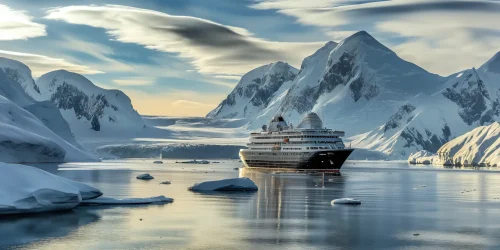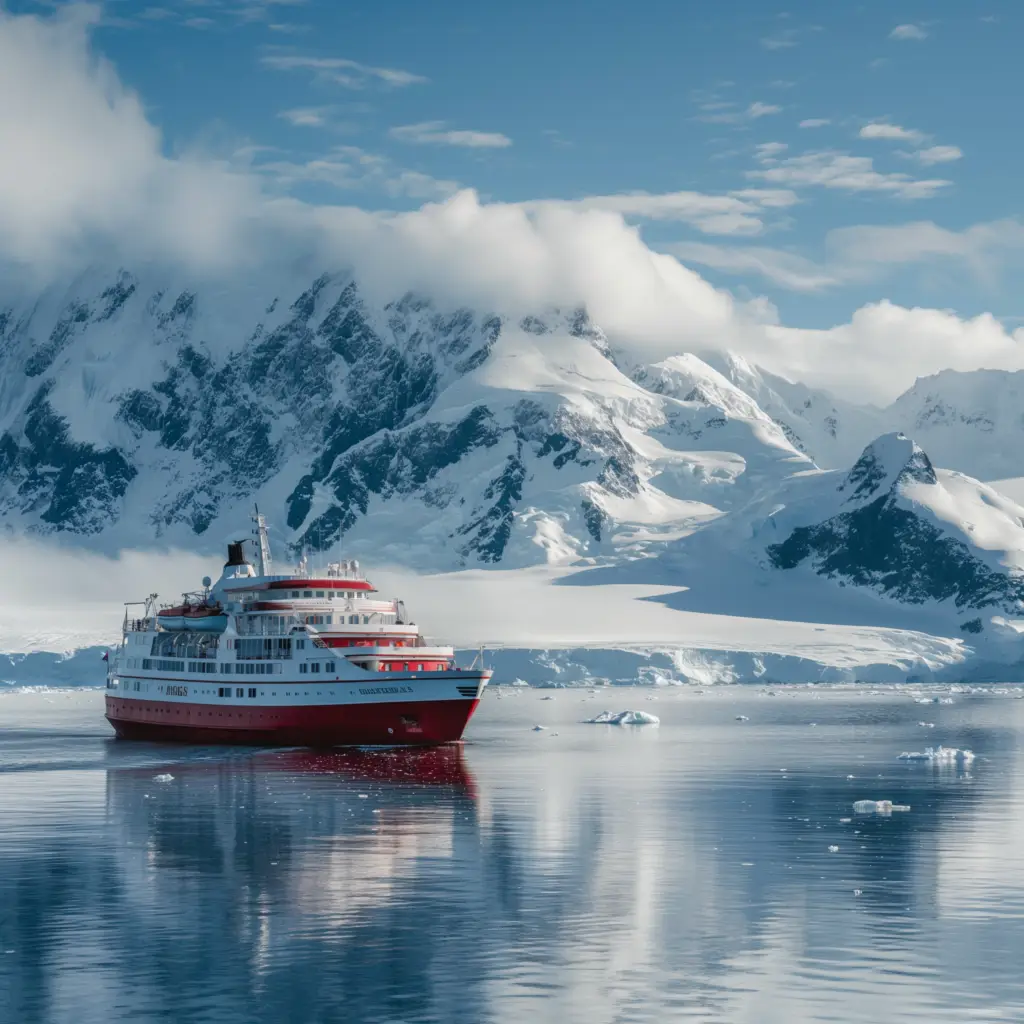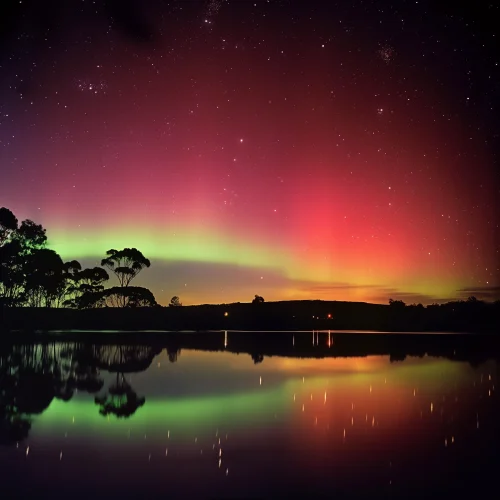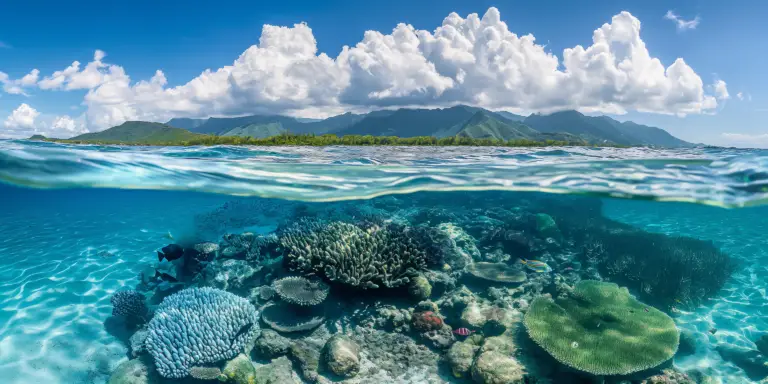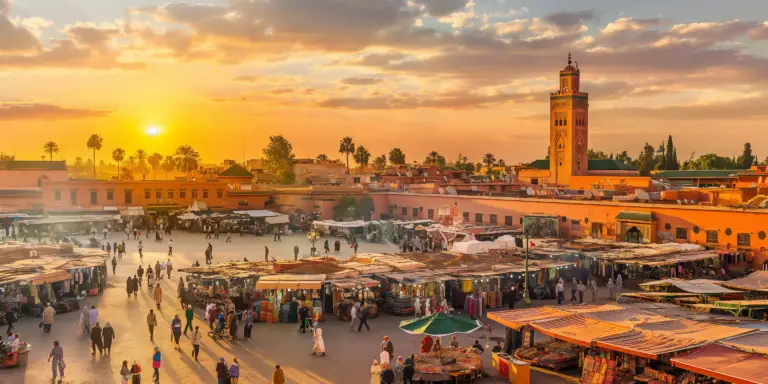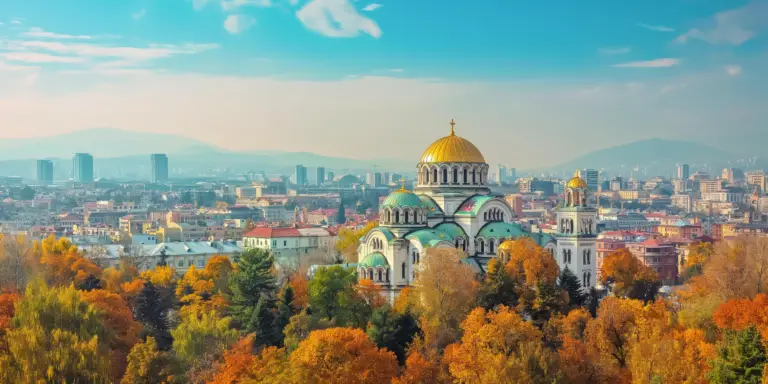Antarctica, the southernmost continent on Earth, is a vast and mysterious land of ice and snow. Known for its extreme conditions and breathtaking landscapes, it is a destination that offers unparalleled adventure and scientific discovery.
The Icy Landscape
Antarctica is covered by an ice sheet that averages about 1.9 kilometers (1.2 miles) in thickness. This icy expanse covers almost 14 million square kilometers (5.4 million square miles), making it the fifth-largest continent. Key features include:
- Ice Shelves and Glaciers: Massive ice shelves, like the Ross Ice Shelf and Larsen Ice Shelf, extend from the continent into the sea. Glaciers, such as the Pine Island Glacier and Thwaites Glacier, are crucial to understanding global sea level rise.
- Mountain Ranges: The Transantarctic Mountains divide the continent into East and West Antarctica, with peaks such as Mount Vinson reaching 4,892 meters (16,050 feet).
Unique Wildlife
Despite its harsh environment, Antarctica is home to a variety of unique wildlife, adapted to the extreme cold:
- Penguins: Iconic species like the Emperor Penguin and Adélie Penguin are commonly seen, thriving in the icy conditions.
- Seals: Species such as the Weddell Seal, Leopard Seal, and Crabeater Seal can be found along the coastline.
- Birds: The continent also hosts numerous seabirds, including skuas, petrels, and the majestic albatross.
Scientific Research
Antarctica is a hub for scientific research, with numerous international research stations, such as:
- McMurdo Station: The largest research station, operated by the United States, supporting a wide range of scientific studies.
- Amundsen-Scott South Pole Station: Located at the geographic South Pole, it conducts important research in astronomy, glaciology, and atmospheric sciences.
- Palmer Station: Another U.S. station focused on marine biology and ecosystems.
Climate and Conditions
Antarctica is the coldest, driest, and windiest continent:
- Temperature: Winter temperatures can drop below -80°C (-112°F), while summer temperatures range from -20°C (-4°F) to just above freezing.
- Precipitation: Technically a desert, Antarctica receives very little precipitation, most of which falls as snow.
Visiting Antarctica
While challenging, visiting Antarctica is an experience like no other:
- Expedition Cruises: The most common way to visit is through guided expedition cruises departing from South America, typically from Ushuaia, Argentina. These trips offer opportunities to explore the coastline, visit research stations, and observe wildlife.
- Activities: Visitors can enjoy activities such as kayaking among icebergs, hiking on the ice, and even camping overnight on the continent.
- Guidelines: Tourism is regulated to minimize environmental impact. Visitors must adhere to strict guidelines to protect the pristine environment.
Conservation Efforts
Preserving Antarctica’s fragile ecosystem is a global priority:
- Antarctic Treaty System: An international agreement that ensures the continent is used for peaceful purposes and scientific research. It prohibits military activity and mineral mining.
- Environmental Protocol: Adds further protections, including waste management practices and preservation of wildlife.
Antarctica is a land of extremes, offering a unique blend of natural beauty, scientific intrigue, and adventure. Whether you’re drawn by the chance to see penguins in their natural habitat, the desire to explore one of the last great wildernesses on Earth, or the opportunity to contribute to vital scientific research, Antarctica promises an unforgettable experience.
